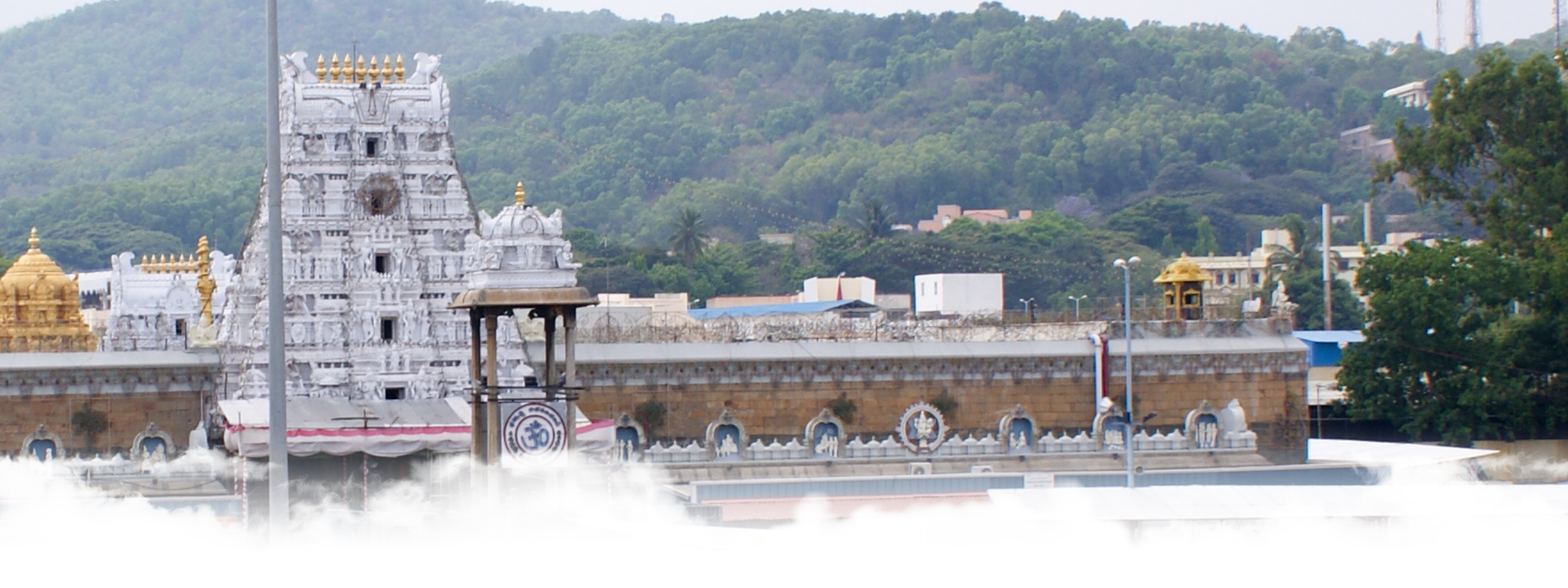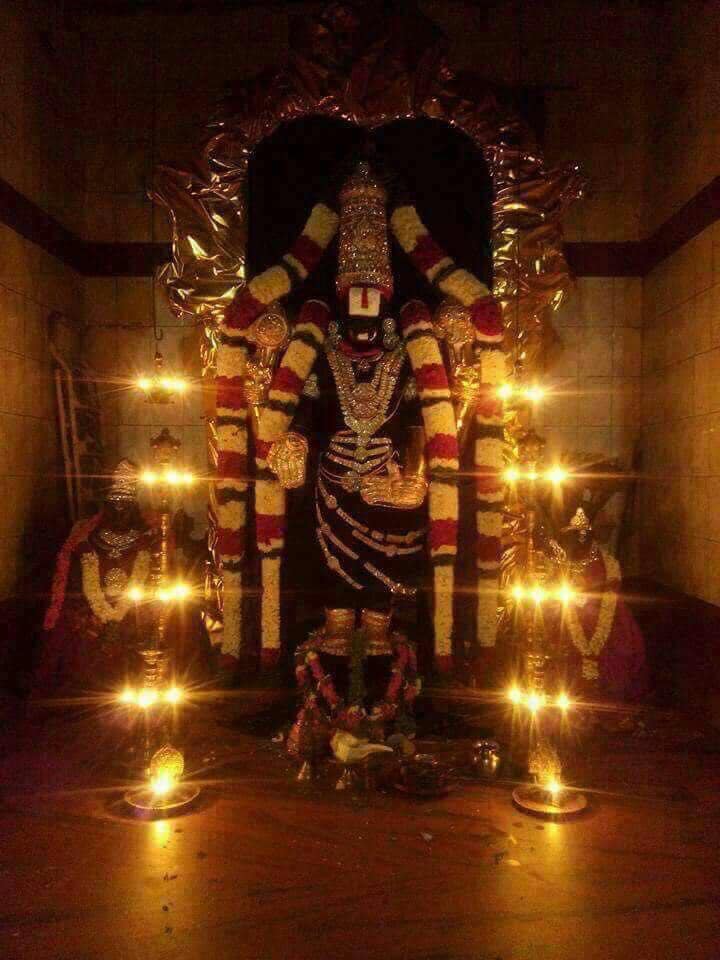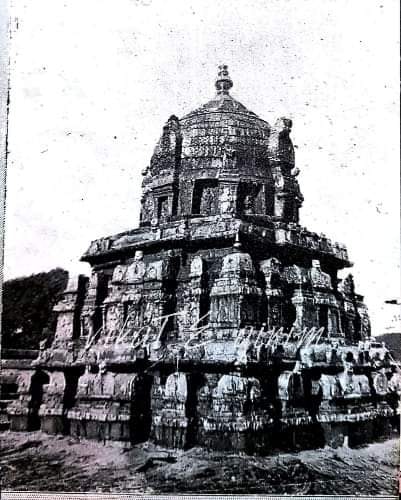
Thirupathi Temple
Nestled in the embrace of the seven hills of Tirumala, the Tirupathi Balaji temple is the epitome of unwavering faith and spirituality. The temple is one of the revered Swayambhu Varaha Kshetras where Lord Venkateswara (Vishnu) is believed to have self-manifested for the welfare of his devotees.
Also known as ‘The Temple of Seven Hills’, the Tirupathi temple finds mention in several eons-old Hindu Vedic scriptures and historical texts. The mystic aura surrounding the temple is further enhanced by the shape of the Tirumala hills which resemble many symbols related to Lord Vishnu.
The majestic 8-feet tall idol of Lord Venkateswara inside the temple Sanctorum stands on the foundation of millions of devotees that visit Balaji every year. From gripping stories to unbelievable contemporary miracles, there’s a lot that Tirupathi temple is known for.
History of the Temple
The ancient temple has seen the reigns of many powerful kings over centuries. There are about 1180 stone carvings in the temple from different ruling dynasties like the Cholas, Chalukyas, Achchuthan Rayar Dynasty, and Sadasiva Rayar.
The construction of the Tirupati temple goes back to around 300 AD during the reign of King Thondaiman of Tondaimandalam kingdom. Later various kings and queens expanded the temple construction and administered the happenings inside the temple complex. Pallava Queen Samavati had donated her precious jewels and 23 acres of land to the temple.
Later during the Chola Kings developed the temple further and added to its riches. The Vijayanagara rulers, especially Kriishnadevaraya, showered the temple with many ornaments of gold and diamonds.
After the decline of the Vijayanagara Empire, East India Company took over the temple administration and leased it to tenants for various purposes. The British later transferred the administration to the Hathiramji Muth which took care of the temple until 1933.
After that, the ”Tirumala Tirupati Devasthanam” (TTD) handled the temple administration for some years until a court order transferred it to Andhra Pradesh government in 1966. However, this order was rolled back in 1979 and a committee having members from the government and the TTD trust was formed. This temple committee has been taking care of the day-to-day activities of the temple till date.

Stories Behind the Temple
The historical temple of Tirupathi has many widespread stories associated with it. According to the most famous story, at the starting of Kali Yug, Narad Muni, the messenger of Gods, asked the saints performing Yajna who was the most worthy of the three supreme gods (Vishnu, Shiva, and Brahma) to be offered the fruit of the Yajna. Sage Bhrigu was sent to test the powers of all three gods, but he went unnoticed by Lord Shiva and Lord Brahma.
Finally, when he went to Lord Vishnu, he was angered at the god not noticing him. He kicked Lord Vishnu on his chest, to which Lord Vishnu reacted politely and apologized to saint Bhrigu by massaging his feet. Since Goddess Lakshmi resided in Vishnu’sVishnu’s chest, she took it as an insult and left Vaikuntam (Abode of Vishnu) to meditate on earth.
Saddened by her departure, Lord Vishnu also starts meditating on earth as his human incarnation called Srinivasa. Knowing this, Lakshmi requests Brahma and Shiva to take care of Srinivasa, and they both take the form of cow and calf. Goddess Lakshmi sent the cow and calf to Chola king, and he appointed a cowherd. When the cow starts feeding Srinivasa on Tirumala hill, the cowherd attacks Srinivasa. Lord Vishnu then cursed King Chola for the disobedience of his servant.
In his next life, Chola king had a daughter named Padmavati whom he married off to Srinivasa to repent his mistake. When Devi Lakshmi came to know this, she confronted Srinivasa in the presence of Padmavati. At that moment, the Lord froze himself and stayed there in the form of an idol. Goddess Lakshmi and Padmavati also decided to stay with him and can be seen by his side in the temple today.

Architecture
The Tirupathi temple is an excellent example of the Dravidian architectural style. It was built skilfully with the use of granites, sandstones, and soapstones. There are three Dwarams (doors) leading to the temple Sanctorum, which have multiple-storied Gopurams (temple towers) on top. The Sanctum Sanctorum (Garbhagriham) of the temple is called the AnandaNilayam, and Lord Venkateswara resides in the Sanctorum facing east.
There are two circumambulation paths (called Pradakshinam) around the Sanctorum used for rituals. These paths have many Mandapas and sub-shrines dedicated to various Hindu deities. The temple premises also have two modern queue complexes to shelter pilgrims and provide them with food. You will also find hair tonsure buildings inside the temple and several pilgrim lodging sites.
Religious Significance
The Tirupathi temple is the most visited temple in India witnessing a crowd of nearly 50 thousand devotees every day. It is one of the eight auspicious Swayambhu Kshetras where Lord Vishnu is believed to have manifested on his own. The Tirupathi Balaji temple finds mention in several Hindu texts and Vedas and is held in very high regard by Hindu worshippers.
The Tirupathi temple is one of the 108 Divyadesam (Vishnu temples mentioned in religious scriptures). The fruit of undertaking a pilgrimage to the Venkateswara shrine is mentioned in the Asthadasa Puranas as well as the Rig Veda. These scriptures describe the presiding deity, Lord Venkateswara, as the bestower of all boons.
The Alwars, supreme devotees of Vishnu, have also sung copiously in praise of Lord Venkateswar. Devotees believe that Lord Venkateswar resides in the shrine to remove all evils from Kali Yug. Any Bhakt who worships the Lord with utter devotion gets his wishes fulfilled as a blessing.
Festivals and Religious Ceremonies
The Tirupathi temple follows the “Vaikhanasa Agama” worship tradition, according to which Lord Vishnu is the supreme god. There are several daily Sevas organized by priests in the temple, including Suprabhata Seva, Archana, Thomala Seva, etc. Apart from that, some weekly and periodical Sevas are also a part of temple rituals.
Besides regular Poojas, several yearly festivals are celebrated in the temple with great pomp and show. The major event of the Tirupathi Temple is the Sri Venkateswara Brahmotsavams which is a nine-day event celebrated in October. During this festival, the deity Malayappa, with his consorts Sridevi and Bhudevi, is taken in a procession around the temple.
Another important event celebrated in Tirupathi is the Vaikunta Ekadasi. It is believed that Vaikuntha Dwarams (door to Vishnu’sVishnu’s abode) open on this day and it is celebrated with grandeur. The Rathasapthami festival is also an important part of Tirumala traditions celebrated in February, when Malayappa is again taken in a procession on seven different Vahanams (vehicles) from morning to night.
The temple administration also organizes celebrations of more than 400 annual festivals in Tirupathi. Some of them are Rama Navami, Ugadi, Pushpa Yagam, Vasanthotsavam, Teppotsavam, Janmashtami, and many others.
Stories of Miracles
In addition to its otherworldly charm, the Tirupathi temple is also a center of many tales of miracles and mysteries. Many devotees claim to have experienced inexplicable miracles due to the blessings of Lord Venkateswara. One very popular miraculous story about Tirupathi goes back to 19th Century India.
It is said that the ruler of Tirumala region of that time had once imposed the death sentence on twelve criminals for severe crimes. 12 people were hung to death, and their dead bodies were left hanging on the walls of the Tirupathi temple. Many people claim that the deity had made an appearance at that time and the temple was later closed down 12 years.
Interesting Facts
- The Tirupathi temple is the richest temple of India and holds the record for being the most visited temple. Millions of devotees donate cash, gold, silver, jewelry, and even property deeds, and Demat share transfers to the temple. The everyday offerings in Tirupathi amount to about 22.5 million rupees.
- The Prasadam offered in the temple, also called the Tirupati Laddu'' has received a Geographical indication tag. It means only Tirupati Tirumala Devasthanams are entitled to make or sell it.
- The murti of Tirupati Balaji is made of mysteriously strong material. The idol remains smeared with green or raw camphor most of the time. Green camphor can lead to cracks and fissures on any metal. However, the Balaji idol has remained surprisingly unaffected all these years.
- The flowers, milk, butter, and leaves used in the worship rituals of Balaji are sourced from an unknown nearby village. No one knows of or is permitted to enter this village except its inhabitants.
